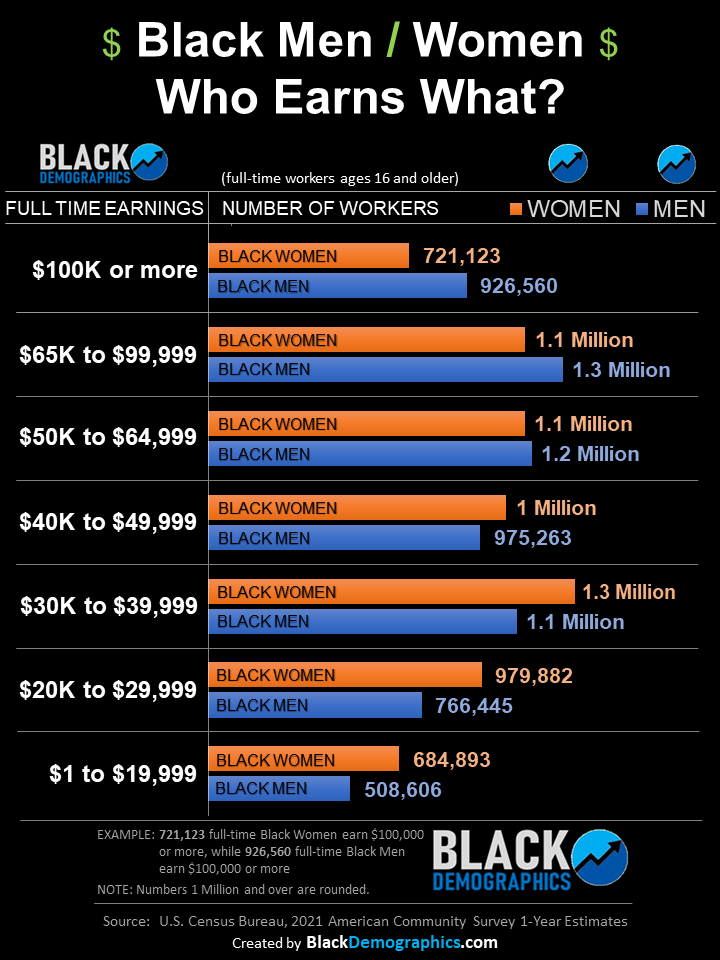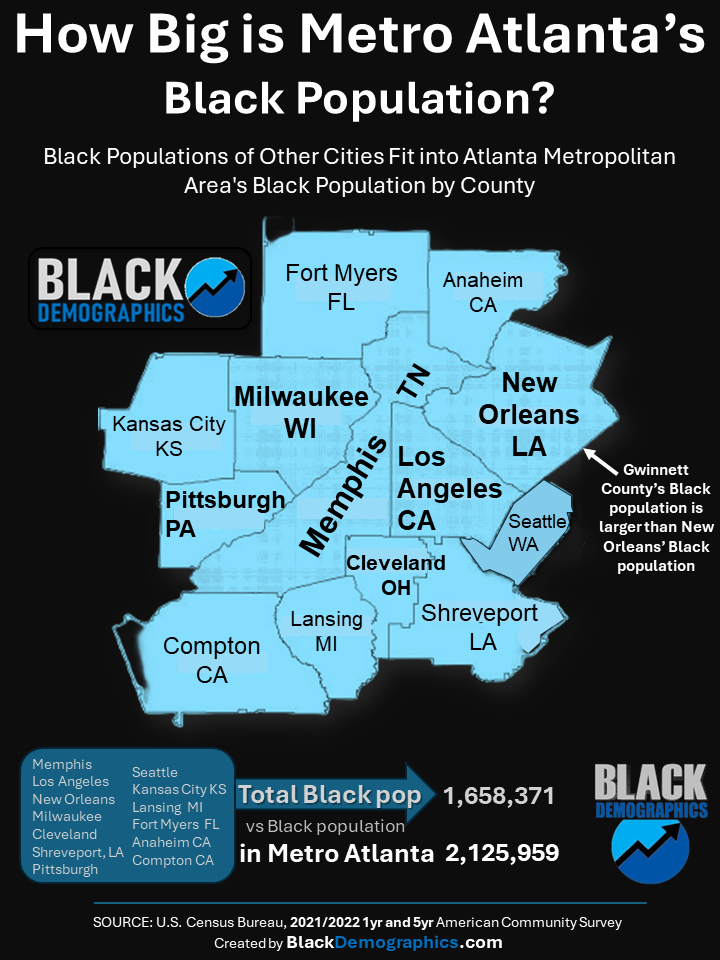The Realities of Work: A Snapshot of Black Men and Women in the Labor Market.
Who’s Working and How Much They Earn.
Total Workforce Presence
With a total of 15.2 million men and 16.9 million women, Black Americans make up a significant portion of the labor market. It’s important to recognize not only the numbers but the individuals and their diverse experiences.
Sometimes people debate whether Black men or women are doing better in jobs and making more money. But it’s not that simple. Actually, there are more Black females than males old enough to work (16 and up)- about 1.8 million more – and this changes how we look at jobs and money for Black Americans
A recent data snapshot prepared by BlackDemographics.com reveals the intricacies of employment among Black Americans, offering insight into the workforce participation of men and women. It’s more complicated than “Do Black men or women make more money?” It also has to do with the amount of Black men and women who are working, their working status, and level of earnings.
Full-Time Jobs All Year
Nearly half of all Black men and women are engaged in year-round employment Specifically, 6.7 million men and 7 million women. Therefore, there are about 326,000 more Black women than men working these full-time jobs.
Part-Time Jobs
When it comes to part-time jobs, a slightly larger percent of Black women work these compared to men(12% vs 23%). In fact, there are over 727,000 more Black women working part-time than Black men with 3.1 million men and 3.9 million women in such role.
The Challenge of No Earnings
Even though about 35% of both Black men and women didn’t make any money last year, there were about 704,000 more women than men in this group. This makes us think about the reasons why, like not enough jobs or other big challenges they face. Of course this includes college students which are overrepresented by women, stay at home spouses, and higher unemployment levels than other racial/ethnic groups.
Every Number Tells a Story
Behind each number, there’s someone’s life story. The data does not discriminate between the single parent juggling multiple jobs, the recent graduate navigating an uncertain job market, or the seasoned professional pursuing career advancement. These numbers show how tough and resilient people are.
Ending Thoughts
The story of Black men and women in the workforce is multifaceted and evolving. As we analyze the data, let’s also commit to understanding and addressing the challenges it represents. By doing so, we can work towards a future where Black men and women are able to have access to opportunities as well as the tools to take advantage of them to make a good life for themselves and their families.









